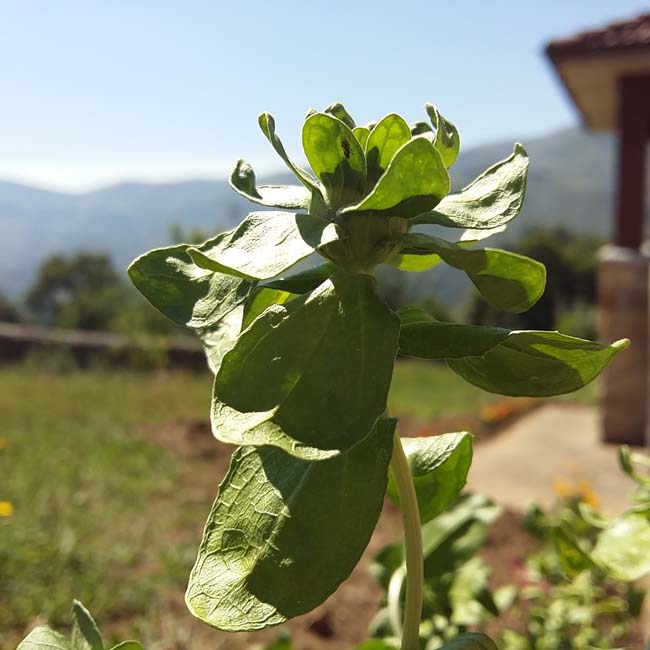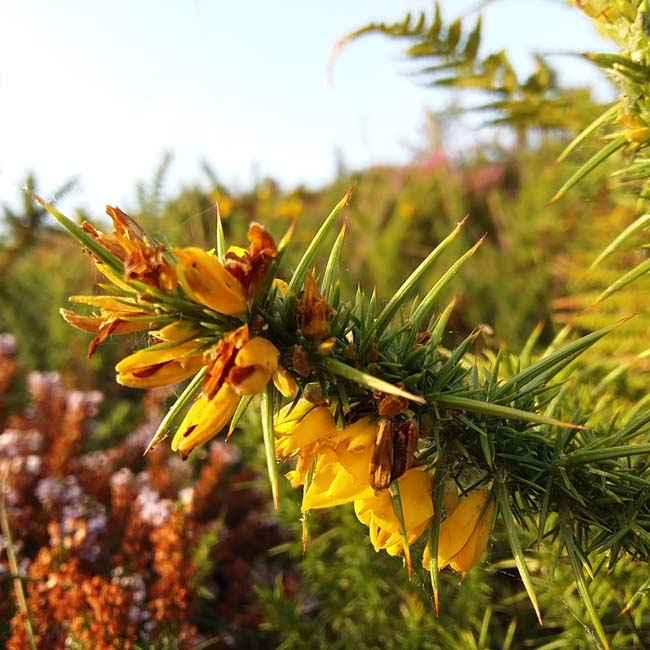[[Tintes ancestrales * Ancient dyes]] Fascina pensar que llevamos miles de años tiñendo textiles con Tintes Naturales, colores que -a pesar de los siglos e incluso milenios- aún pueden contemplarse en su plenitud en los museos de indumentaria, arqueología o etnografía. Y no se trataba solo de plantas (el Reino más abundante de materias colorantes), sino también de líquenes (ej. orchilla), insectos (ej. cochinilla) y moluscos (ej. murex), lo que nos recuerda que la Naturaleza es enormemente rica de fuentes tintóreas. Y es que los tintes, a pesar de no contar con el reconocimiento que se merecen, han permitido a los diferentes pueblos configurar su identidad cultural en campos tan diversos como el folclore, el arte textil, los rituales funerarios e incluso la indumentaria bélica.
We love to think that Nature, incredibly, during thousands of years, have provided to us sources of natural dyes to give life to our textiles. One just have to take a walk through the museums (clothing, archeology, ethnography …) to see the beautiful and vivid colors historically used in handmade textiles, which were obtained by extracting the colouring power contained in a variety of natural dyestuffs, not only in plants but also in certain lichens (eg. orchilla), insects (eg. cochineal) and mollusks (eg. murex). Colors full of history, power relations and symbolism, which different cultures have used to configure their cultural identity in fields as diverse as clothing, art, decoration, funerary rituals, military affairs, etc.

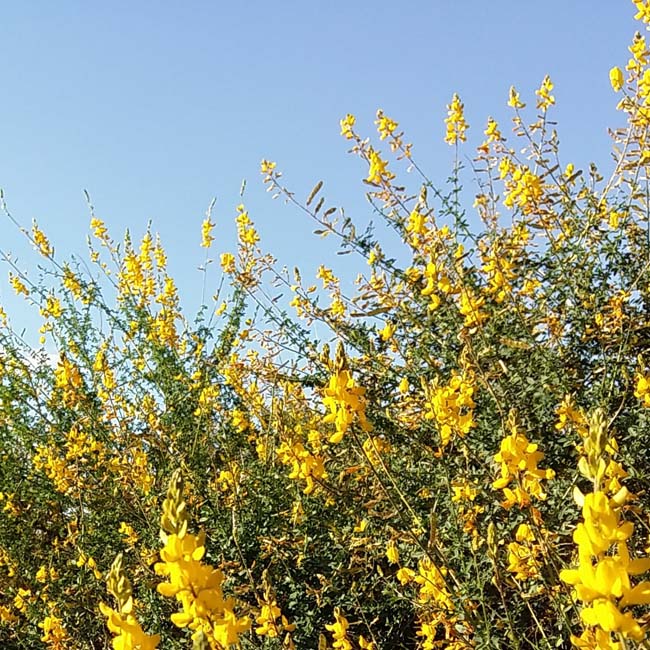
En la actualidad nos encontramos ante un gran reto: recuperar los saberes tintóreos desarrollados durante milenios, con la dificultad de que se trata de conocimientos transmitidos de forma oral de generación en generación y celosamente custodiados en el seno de comunidades locales y herméticos gremios. Y aunque existen tratados de teñido escritos en los últimos siglos, dado que la mayoría hace alusión a la utilización de sustancias tóxicas (a partir de la edad media se tenia acceso a toda suerte de sustancias químicas), el trabajo ahora consiste en cribar dichos conocimientos de acuerdo a la Conciencia Ecológica actual, pensando en la salud de los consumidores y del propio tintorero; en el cuidado del Medio Ambiente; en la gestión sostenible de los recursos tintóreos; y en un largo etcétera de consideraciones éticas, cada día más en la mente del Consumidor Responsable, quién aboga por un Modelo de Usar & Usar!
But the challenge we face today is not small. On the one hand, recover ancestral dyeing knowledges, jealously guarded for millennia due to cultural and economic issues, with the difficulty of having reached our days very few documents, insofar that this knowledge has been traditionally transferred orally (from generation to generation) both in the local communities, as well as in the dyeing guilds. And, secondly, to update such knowledge according to actual ethics, ecology, styles and needs, as nowadays we have the responsibility to take into account plenty of “new issues” that have to do with animal welfare, workers’ rights and health, care for the environment and the sustainable management of resources, and a long list of economic, ethical and ecological considerations, thankfully, increasingly on the minds of the responsible consumer who advocates a Model of Use & Use.
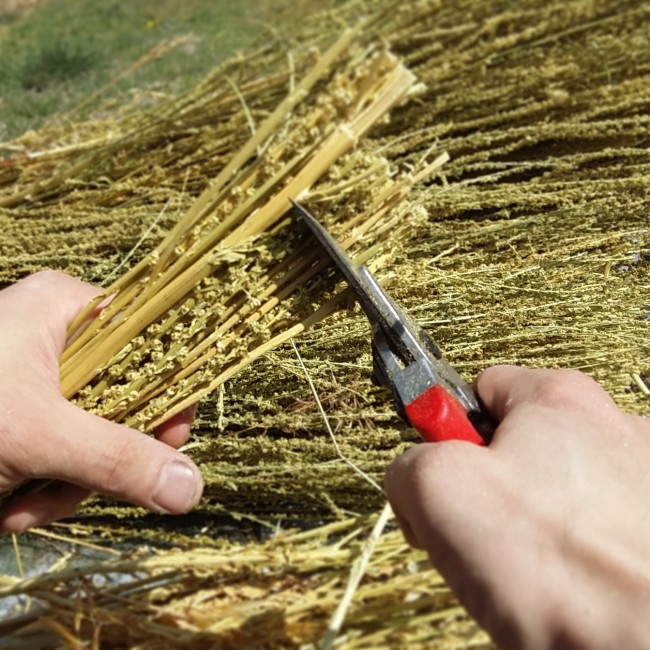
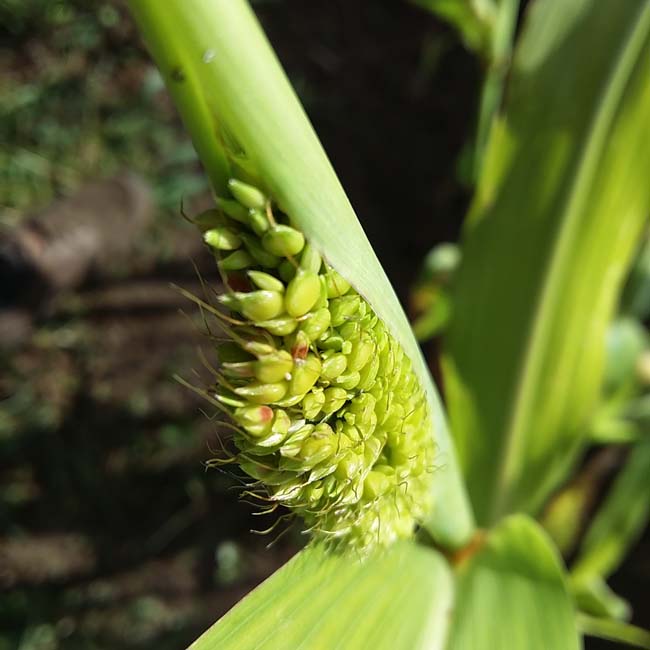
Es por ello que en Tinctórea nos esforzamos por recuperar la forma de teñir que tenían los antiguos sin necesidad de recurrir a sustancias tóxicas para fijar los tintes. Por suerte, la naturaleza es enormemente rica en sustancias mordientes con las que dar estabilidad a los tintes de forma natural y saludable, y las comunidades locales e indígenas han sabido preservar sus recetas ancestrales. Es pues todo un privilegio ser herederos de este legado y en parte también una responsabilidad el hacer llegar estos saberes a la nueva comunidad de tintoreros, al fin de evitar que recurran (como muchos hacen) a la utilización de sustancias tóxicas para fijar los tintes naturales, máxime existiendo excelentes alternativas para hacerlo inocuos!
For us is a privilege to create our textiles sheltered from this heritage that we strive to retrieve and disseminate! Often we try to imagine the environment in which ancient and medieval dyers used to work, considering that nowadays the context is completely different. How did they managed to access to the dyeing knowledge, and what channels did they use to get all the dye stuff and equipment, in times when there were fast transport, schools, internet or media? Definetely, it was a time when the recipes to obtain certain colors were specially valued, in concrete by the elites who flaunted certain colors as an instrument of economic and social differentiation. In this context, we can imagine the importance of the work of dyer.
